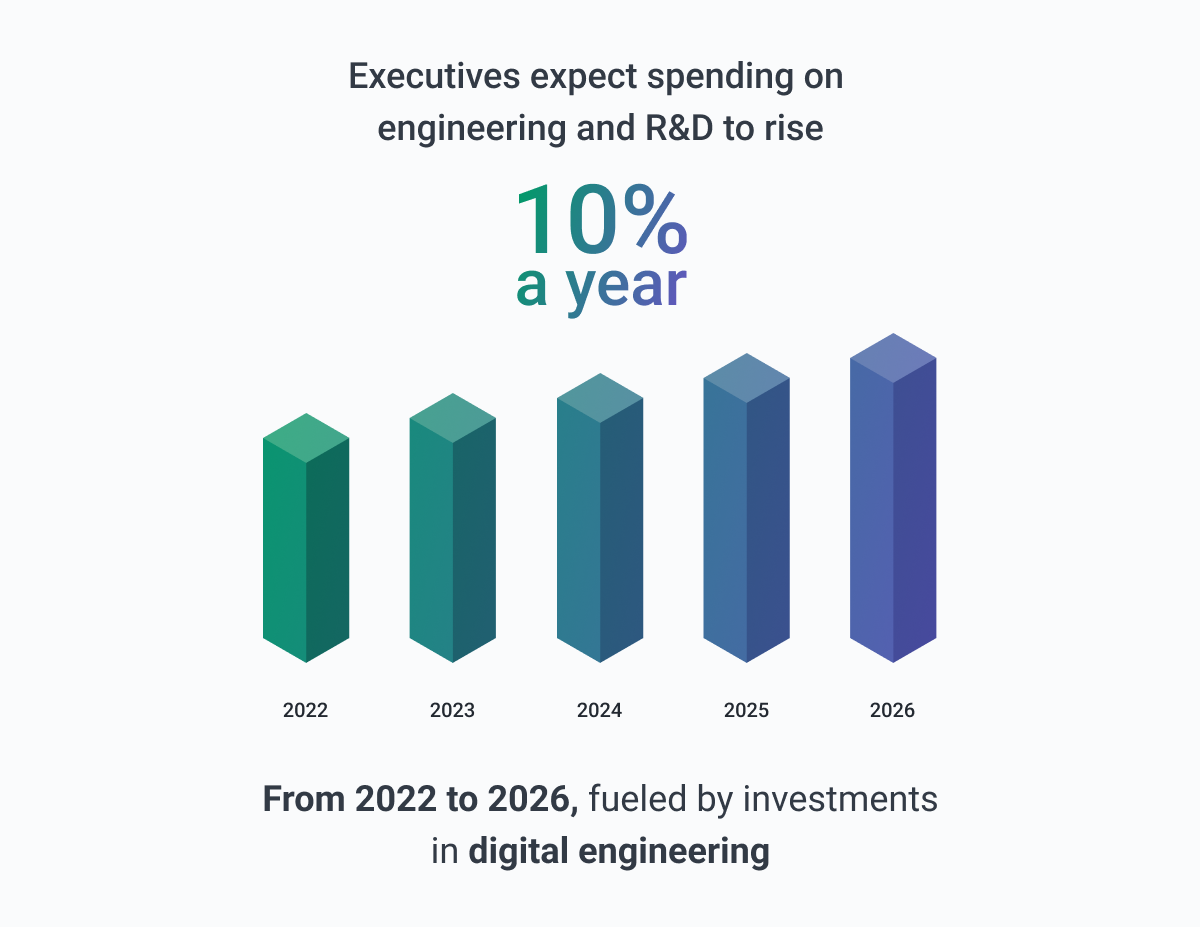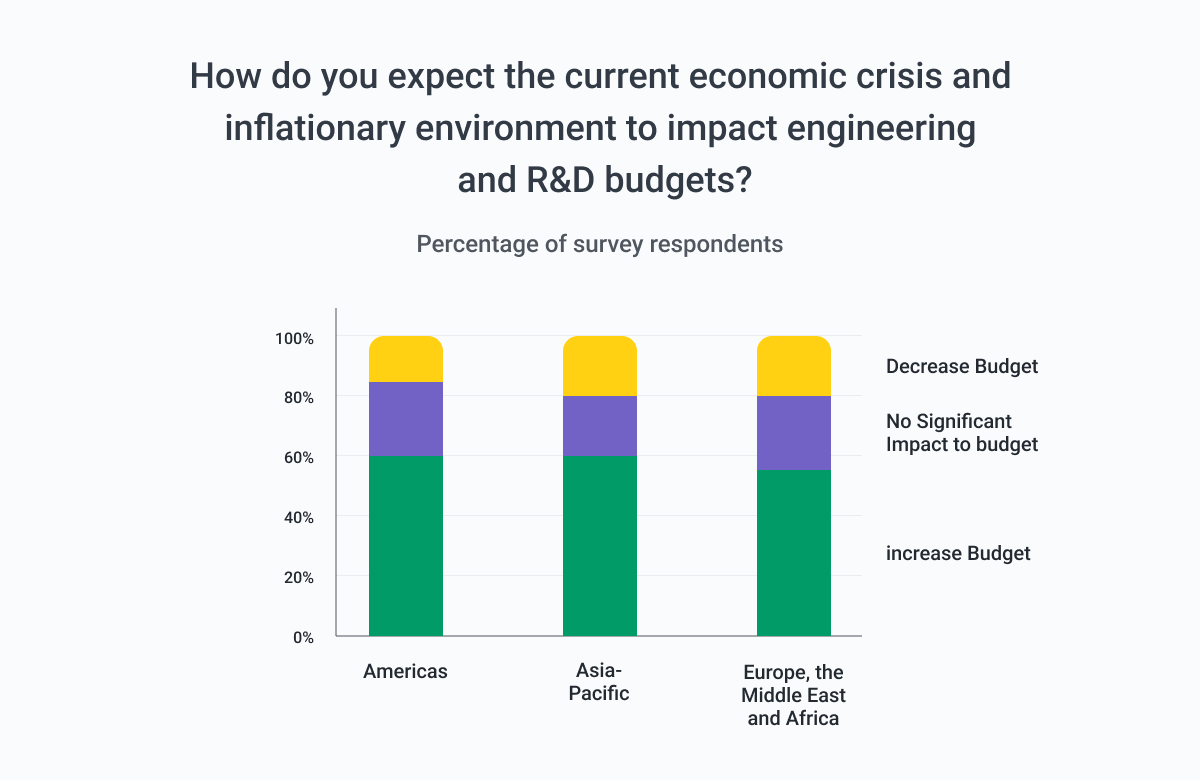Research and Development (R&D) is the backbone of innovation in many industries, and software product development is no exception. In an era where technology is rapidly evolving, R&D plays a pivotal role in ensuring that software products are not only current but also future-ready.
Understanding R&D in Software Product Development
R&D in the context of software involves a combination of researching new technologies, methodologies, and market trends, and then developing prototypes, tools, or features based on this research.
Key Benefits of R&D in Software Product Development
- Staying Ahead of the Curve: R&D allows companies to anticipate and prepare for future technological trends, ensuring they remain competitive.
- Meeting Evolving Customer Needs: Through R&D, companies can better understand and anticipate the changing needs and preferences of their users, leading to more user-centric products.
- Risk Mitigation: By researching and prototyping, companies can identify potential challenges or issues early on, reducing the risk of costly mistakes in the final product.
- Driving Innovation: R&D fosters a culture of innovation, encouraging teams to explore novel solutions and think outside the box.
- Enhancing Product Quality: Research can lead to the discovery of better development tools, methodologies, or technologies, resulting in higher quality software products.
Challenges in R&D for Software Product Development
- Resource Allocation: R&D can be resource-intensive, requiring both time and money. Companies must strike a balance between investing in R&D and other operational needs.
- Rapid Technological Changes: The fast-paced nature of technology means that what's cutting-edge today might be obsolete tomorrow.
- Uncertain ROI: Not all R&D efforts will lead to successful outcomes, making it a riskier investment.
The Importance of R&D in the Software Product Development Process
There's no denying that software products have become an integral part of our everyday lives. From mobile apps to business management systems, software plays a crucial role in enhancing productivity, efficiency, and user experience. But have you ever wondered how these software products are developed from an idea to a fully functional program? It's no easy feat!
In fact, according to research by KPMG, 70% of organizations have suffered at least one project failure in the prior 12 months, while 50% of respondents indicated that their projects consistently failed what they set out to achieve.
How does one ensure that a project sees success? We believe that Research and Development (R&D) is the backbone of software product development, and plays a pivotal role in ensuring that software products are not only current but also future-ready.
This article aims to shed light on the importance of research and development (R&D) in the software product development process.

Definition of the Software Product Development Process
Definition
The software product development process refers to the systematic approach taken to conceive, design, build, and deliver a software product or service. It involves a series of steps and activities that ensure the successful creation of a software system that meets the needs and expectations of the end-users.
Essentials of Software Product Development
Software product development encompasses various elements, including market research, requirement analysis, design, coding, testing, and deployment. Each of these phases is critical to the overall success of the software project, and careful attention must be given to ensure efficient execution.
The Software Product Development Process: Step by Step
The software product development process typically includes the following steps:
- Idea generation and concept development
- Market research and competitor analysis
- Requirements gathering and analysis
- Product design and architecture
- Coding and development
- Testing and quality assurance
- Deployment and product launch
How to Build a Successful Software Product Development Team?
The importance of a development team in software product development
Building a successful software development team is crucial as it directly impacts the quality and efficiency of the product being developed. A strong development team consists of skilled and experienced software developers, designers, testers, and project managers who work collaboratively toward a common goal.

Product development team structure and roles
The product team typically comprises individuals with different roles and responsibilities, including:
- Product manager: Responsible for defining the product vision and strategy
- UI/UX designers: Focus on creating a user-friendly and visually appealing product design
- Software developers: Write code and develop the software product
- Testers: Perform testing and quality assurance activities to identify and fix any defects
- Project manager: Oversees the entire development process and ensures timely delivery
Choosing the Right Product Development Methodology
Choosing the right product development methodology is crucial for the success of any project. Each methodology has its own advantages and disadvantages, and the choice depends on the nature of the project and the preferences of the development team.
Different Software Product Development Methodologies
One of the most popular development methodologies is Agile, which focuses on iterative and incremental development. According to Zippia, at least 71% of U.S. companies were using Agile in 2022, and they were able to achieve a 64% success rate on Agile-based projects, whereas projects under the competing methodology known as waterfall only have a 49% success rate.
Agile development allows for flexibility and adaptability, enabling teams to quickly respond to changes and deliver a product that meets the evolving needs of the market.
Another commonly used methodology is Waterfall, which follows a linear approach with distinct phases, including requirements gathering, design, development, testing, and deployment. Waterfall is suitable for projects with well-defined and stable requirements.
In addition to these, there are other methodologies like Lean, Scrum, and Kanban, each with their own specific advantages. When choosing a methodology, it is important to consider factors such as project complexity, team size, customer involvement, and the level of uncertainty.
It is crucial to select a methodology that aligns with the project requirements and the organization's culture to ensure smooth and efficient product development.
Defining a Clear Software Product Development Strategy
The Importance of a Clear Software Development Strategy
A clear product development strategy helps align the development team's efforts with the organization's goals and objectives. It provides a roadmap for the team to follow, enabling them to prioritize tasks, allocate resources effectively, and make informed decisions throughout the development process.
The benefits of a well-defined software development strategy
A well-defined software development strategy brings several benefits, including:
- Clear direction and focus for the development team
- Efficient resource allocation and task prioritization
- Improved collaboration and communication among team members
- Reduced time to market and faster product delivery
- Enhanced customer satisfaction by meeting their expectations
Build a product roadmap for software product development
A product roadmap outlines the strategic goals, timeline, and key milestones of the software product development process. It provides a visual representation of the product's journey from conception to launch, helping the team stay focused and on track.
What are the Different Stages of the Software Product Development Lifecycle?
The software development life cycle (SDLC) outlines the various stages involved in the development process. It typically includes:
- Planning and Requirements: Develop new product idea, define project objectives, and gather requirements.
- Feasibility Study: Assess project viability.
- System Design: Create a system architecture and detailed component designs.
- Implementation (Coding): Write code to develop software based on design specifications.
- Testing: Evaluate software for defects and issues.
- Deployment: Deploy the software in the production environment.
- Maintenance and Support: Provide ongoing support, updates, and bug fixes.
- Documentation: Create comprehensive project documentation.
- Review and Feedback: Continuously assess progress and quality.
- Iterative and Agile Approaches: Consider iterative and Agile methodologies for flexibility.
- Post-Release Evaluation: Gather user feedback and assess performance for improvements.
The importance of continuous improvement in software product development
Continuous improvement is vital in software product development as it allows for the identification of areas for enhancement and the implementation of necessary changes. By constantly iterating and improving the product, software developers can ensure that it remains relevant and competitive in the market.
At Which Step Does R&D Benefit Software Product Development?
The role of research and development in software product innovation
Research and development play a crucial role in software product innovation. R&D activities involve exploring new ideas, technologies, and methodologies to enhance existing software products or create new ones. It allows organizations to stay ahead of the competition and deliver cutting-edge solutions to their customers.
How R&D Helps in Creating New Software Solutions
R&D plays a pivotal role in creating a new product, especially during the early development stages. Through meticulous research, prototyping, and experimentation, it paves the way for innovative ideas to take shape and evolve into a minimum viable product (MVP).
R&D's involvement in the development steps is critical, as it ensures that the working software aligns with the intended goals of creating a software product that precisely addresses specific market needs.
This process is a cornerstone of product development, where each phase is meticulously crafted through software development services, guided by an agile development approach.
R&D teams are at the forefront of product ideation, constantly pushing the boundaries of what's possible in the realm of software development projects, ultimately driving the creation of groundbreaking solutions.
Using R&D to Enhance Existing Software Products
In the later stage of software product development, R&D proves invaluable for refining existing software solutions. It starts by identifying essential software requirements and meticulously aligning them to ensure the product meets evolving user needs.
Through a well-structured software development lifecycle and best development practices, R&D teams work diligently to enhance customized software offerings. This entails improving software quality, optimizing performance, and incorporating new features in a software product based on user feedback.
Organizations that leverage R&D for these purposes demonstrate their commitment to continual improvement and ensuring their software solutions remain competitive and user-centric throughout their lifecycle.

Key Benefits of R&D in Custom Software Product Development
Staying Ahead of the Curve
Research and development (R&D) efforts in software product development enable companies to stay ahead of the curve by actively monitoring and analyzing technological trends. This proactive approach ensures that businesses remain competitive in a rapidly evolving industry. By staying informed about emerging technologies, they can adapt and incorporate innovations before their competitors do.
Meeting Evolving Customer Needs
R&D helps companies gain a deeper understanding of their customer base and their evolving needs and preferences. Through customer-centric research and data analysis, companies can anticipate changes in user expectations and tailor their software products accordingly. This ensures that products remain relevant and valuable to their target audience.
Risk Mitigation
R&D plays a critical role in identifying and mitigating potential risks in software development. By conducting thorough research, experimentation, and prototyping, companies can uncover and address challenges early in the development process. This proactive risk management approach reduces the likelihood of costly errors or setbacks during the later stages of product development.
Driving Innovation
R&D fosters a culture of innovation within organizations. It encourages teams to think creatively, explore unconventional solutions, and push the boundaries of what's possible. By investing in R&D, companies create an environment that values experimentation and the pursuit of novel ideas, which can lead to groundbreaking advancements in software development.
Enhancing Product Quality
Research can uncover better development tools, methodologies, and technologies that can significantly enhance the quality of software products. By continuously refining and improving their development processes based on R&D findings, companies can deliver higher-quality software that meets or exceeds customer expectations.
How to Develop a Software Product Strategy Using R&D
Market Research
The R&D process begins with comprehensive market research. This involves studying current market trends, analyzing customer preferences, and assessing competitor offerings. This information serves as the foundation for informed decision-making throughout the development cycle.
Technology Exploration
Companies engage in technology exploration to identify emerging technologies, tools, or platforms that can enhance their software development efforts. This phase involves evaluating the feasibility and potential benefits of integrating new technologies into their projects.
Prototyping
To validate ideas and concepts, companies create prototypes or early versions of new features or products. These prototypes serve as tangible representations of proposed solutions, allowing teams to test functionality, usability, and feasibility. This phase helps in making informed decisions about whether to proceed with a particular concept.
Feedback and Iteration
Feedback is crucial in the R&D process. Internal reviews and user feedback are used to refine and improve upon prototypes. Continuous iteration based on this feedback ensures that the final product aligns with user expectations and project goals.
Integration
Once a new tool, feature, or methodology has been thoroughly tested and refined, it is integrated into the broader software development process. This seamless integration ensures that the benefits of R&D efforts are realized in the final product.
Challenges in R&D for Software Product Development
Resource Allocation
R&D can be resource-intensive, demanding both time and financial investments. Companies must strike a balance between allocating resources to R&D initiatives and meeting other operational needs. Finding this balance is essential to maintain financial stability while fostering innovation.
Rapid Technological Changes
The software industry is characterized by rapid technological advancements. What is considered cutting-edge today may become obsolete in a short period. Companies must continuously adapt and allocate resources to stay up-to-date with the latest technologies, which can be challenging and costly.
Uncertain ROI
Not all R&D efforts will lead to successful outcomes, making it a potentially risky investment. Companies face uncertainty regarding the return on investment (ROI) for their R&D projects. It requires careful evaluation and risk assessment to determine which initiatives are worth pursuing and which may not yield the expected results.

Softjourn: Your Guide on Software Product Development Journey
In the ever-evolving landscape of software product development, Softjourn, a leading software development company, stands as a beacon of expertise and innovation.
Our dedicated R&D teams play a significant part in the software process - whether it's creating a product prototype, designing cutting-edge applications or software products, or a new product forward from research and design to market.
With a wealth of experience, Softjourn ensures the end product meets the highest standards of software quality, viability of the future product, and customer satisfaction. Through meticulous research and development, Softjourn navigates every phase of the software product development journey, delivering on time and on budget.
If you're ready to take the leap into the world of software innovation, let Softjourn and our expert R&D teams be your trusted guide.
Why R&D? [Infographics]
Research and development (R&D) refers to the activities companies undertake to innovate and introduce new products and services. It is often the first stage in the development process. The goal is typically to take new products and services to market and add to the company's bottom line. Research and development activities are crucial for companies to stay competitive; don't believe us? Check out the following infographic on global R&D trends.
![Why R&D? [Inforgraphics]](../../../media/images/Blog/infographics/R_D_Infographic.png)
Conclusion
R&D is a critical component of successful software product development, driving innovation, enhancing quality, and ensuring products remain relevant in a changing technological landscape. While it comes with its challenges, the potential rewards—both in terms of product success and company growth—are significant.
For those interested in diving deeper into the role of R&D in software product development, books like "The Lean Startup" by Eric Ries and "Innovator's Dilemma" by Clayton Christensen offer valuable insights into the importance of research, innovation, and adaptability in the tech industry.














